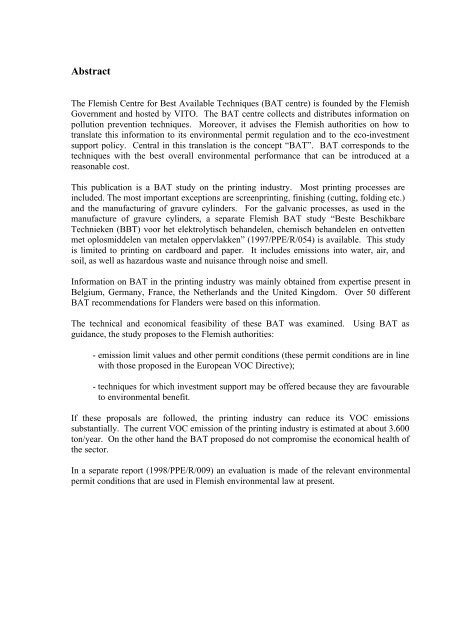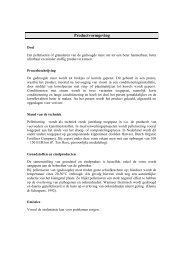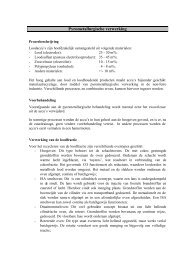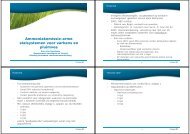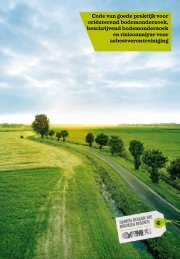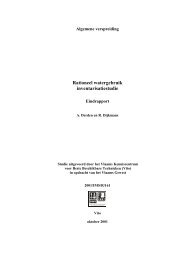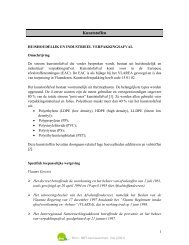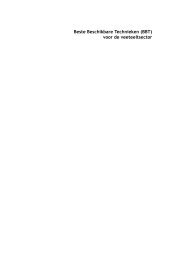als PDF downloaden - Emis - Vito
als PDF downloaden - Emis - Vito
als PDF downloaden - Emis - Vito
Create successful ePaper yourself
Turn your PDF publications into a flip-book with our unique Google optimized e-Paper software.
Abstract<br />
The Flemish Centre for Best Available Techniques (BAT centre) is founded by the Flemish<br />
Government and hosted by VITO. The BAT centre collects and distributes information on<br />
pollution prevention techniques. Moreover, it advises the Flemish authorities on how to<br />
translate this information to its environmental permit regulation and to the eco-investment<br />
support policy. Central in this translation is the concept “BAT”. BAT corresponds to the<br />
techniques with the best overall environmental performance that can be introduced at a<br />
reasonable cost.<br />
This publication is a BAT study on the printing industry. Most printing processes are<br />
included. The most important exceptions are screenprinting, finishing (cutting, folding etc.)<br />
and the manufacturing of gravure cylinders. For the galvanic processes, as used in the<br />
manufacture of gravure cylinders, a separate Flemish BAT study “Beste Beschikbare<br />
Technieken (BBT) voor het elektrolytisch behandelen, chemisch behandelen en ontvetten<br />
met oplosmiddelen van metalen oppervlakken” (1997/PPE/R/054) is available. This study<br />
is limited to printing on cardboard and paper. It includes emissions into water, air, and<br />
soil, as well as hazardous waste and nuisance through noise and smell.<br />
Information on BAT in the printing industry was mainly obtained from expertise present in<br />
Belgium, Germany, France, the Netherlands and the United Kingdom. Over 50 different<br />
BAT recommendations for Flanders were based on this information.<br />
The technical and economical feasibility of these BAT was examined. Using BAT as<br />
guidance, the study proposes to the Flemish authorities:<br />
- emission limit values and other permit conditions (these permit conditions are in line<br />
with those proposed in the European VOC Directive);<br />
- techniques for which investment support may be offered because they are favourable<br />
to environmental benefit.<br />
If these propos<strong>als</strong> are followed, the printing industry can reduce its VOC emissions<br />
substantially. The current VOC emission of the printing industry is estimated at about 3.600<br />
ton/year. On the other hand the BAT proposed do not compromise the economical health of<br />
the sector.<br />
In a separate report (1998/PPE/R/009) an evaluation is made of the relevant environmental<br />
permit conditions that are used in Flemish environmental law at present.


